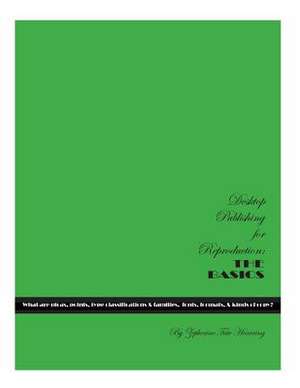Desktop Publishing for Reproduction
Autor Zepherine Tate Hearringen Limba Engleză Paperback
Preț: 262.56 lei
Nou
Puncte Express: 394
Preț estimativ în valută:
50.24€ • 52.70$ • 41.82£
50.24€ • 52.70$ • 41.82£
Carte disponibilă
Livrare economică 11-25 martie
Preluare comenzi: 021 569.72.76
Specificații
ISBN-13: 9781495207150
ISBN-10: 1495207153
Pagini: 78
Dimensiuni: 216 x 279 x 5 mm
Greutate: 0.2 kg
Editura: CreateSpace Independent Publishing Platform
ISBN-10: 1495207153
Pagini: 78
Dimensiuni: 216 x 279 x 5 mm
Greutate: 0.2 kg
Editura: CreateSpace Independent Publishing Platform
